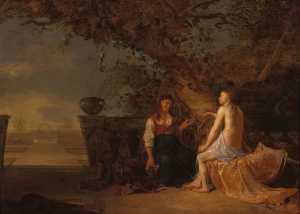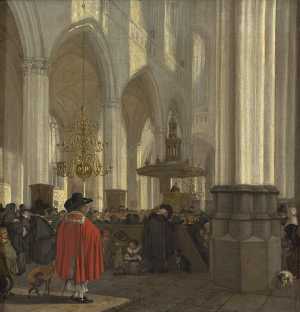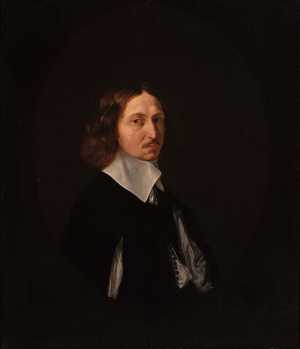Around the 1640s, Emanuel de Witte became a pupil of the Delft-based still life artist Evert van Aelst. In 1652 he moved to Amsterdam. From 1641, De Witte initially painted Biblical and mythological scenes. But from 1650, he specialised in church interiors and the occasional market scene.

Emanuel de Witte
Alkmaar 1617 - Amsterdam 1692












